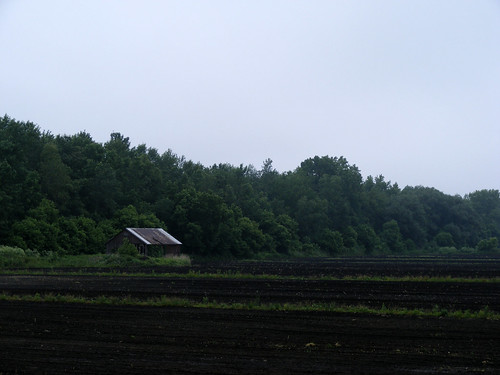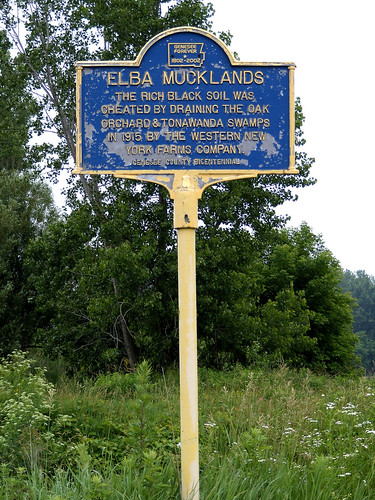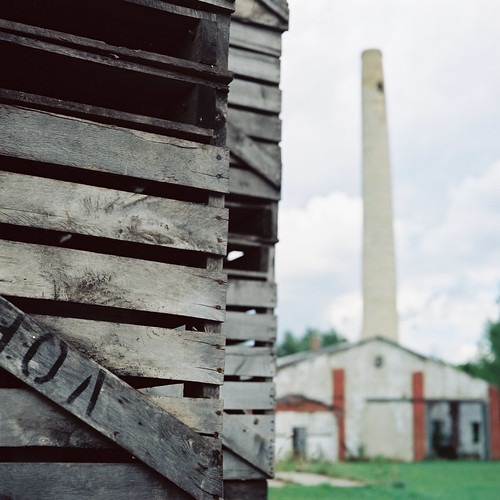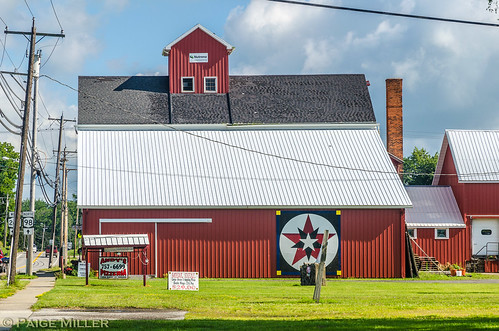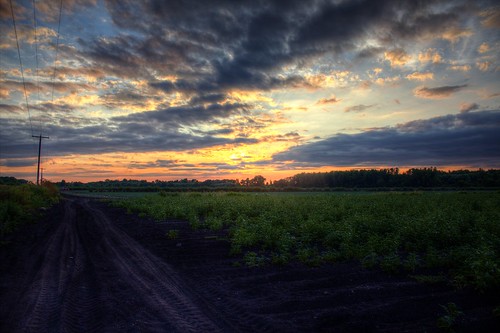The Muscatatuck National Wildlife Refuge is comprised of 7,802-acres. Founded in 1966, it became the state of Indiana's first wildlife refuge. The refuge takes its name from the nearby Muscatatuck River. In English, Muscatatuck means, "The Land of the Winding Waters". The refuge is not far from Seymour, in Southeastern Indiana. It spans across parts of three counties in the State of Indiana. Like many wildlife refuges, its creation was funded by Duck Stamps.
Audubon Guide to the National Wildlife Refuges
When visiting the park, it is best to be prepared beforehand. While hiking through certain parts of the refuge, you will want to wear long-sleeved shirts and pants to protect yourself from ticks and biting flies. Informational reading materials, with maps and refuge details, are available at the visitor center. Notices will also be available during the hunting season.
Links:
 |
| By The original uploader was Bedford at English Wikipedia [Copyrighted free use], via Wikimedia Commons |
Audubon Guide to the National Wildlife Refuges
When visiting the park, it is best to be prepared beforehand. While hiking through certain parts of the refuge, you will want to wear long-sleeved shirts and pants to protect yourself from ticks and biting flies. Informational reading materials, with maps and refuge details, are available at the visitor center. Notices will also be available during the hunting season.
Wildlife of the Muscatatuck National Wildlife Refuge
Both wood ducks and bald eagles have nesting areas at the wildlife refuge. The bald eagles have a small but growing population at Muscatatuck. Each year they produce offspring and have been in the area for over a decade. They hunt fish from the marshes and other areas of the refuge. As for wood ducks, they're plentiful during the warmer seasons. The male ducks arrive in February in search of nesting places. The females arrive not long after and begin laying eggs in the nests in March and April. The nests are usually built inside tree spaces and cavities. They do so to protect the nests from the wind, other elements, and any predators. Once May comes around, the baby wood ducks begin to hatch. They spend the summer out of the nest and migrate with the rest of the ducks in late Autumn. On the refuge are great blue herons and many species of small birds.
River otters make up another noticeable population of wildlife on the refuge. They've seen their numbers dwindle around the state in the past due to hunting and habitat loss. In 1995, they were reintroduced at Muscatatuck. Which was the first ever reintroduction effort of river otters in Indiana. If you look to watch wildlife then it's best to visit in the morning around sunrise.
 |
| By Nyttend (Own work) [Public domain], via Wikimedia Commons |
Land Features of the Muscatatuck National Wildlife Refuge
Grasslands
The grasslands of Muscatatuck are maintained through mowing and burning of the grass. This is for the prevention of tree growth and overgrowth. Which allows wildlife to thrive better in the grassland areas. Along the trail areas, it is the grasslands that provide opportunities to spot wildlife.
Wetlands
Historically, Indiana had plenty of wetlands. Though, many were drained to make way for farmland by settlers. The drainage of much the area of Muscatatuck was unsuccessful though. In time, some of this former farmland has been developed further. Which includes the areas around Muscatatuck. The wildlife refuge has just one of the many wetland preserves across Indiana.
The water levels in the marshes, lakes and elsewhere on the refuge are maintained by refuge staff. Which includes flooding and draining some of the wetlands to keep the grounds healthy. This is done by pipes and water controls connecting sections of the wetlands. The water is moved routinely throughout the year. Which includes the marshy lower lands of the refuge that are filled in autumn and drained in the spring. The same thing occurs at the lowland forests. This is to aid waterfowl and, more specifically, the wood ducks. Two of these marshes are named the Endicott and MacDonald Marshes.
Forest Areas
Around 55% of the Muscatatuck refuge consists of forest. Of that, approximately 57% of the forest is bottomland hardwood forest and 43% is an upland forest. The rest of the land area is a mix of habitats, including those listed above. Workers at the refuge remove beaver dams to keep these bottomland forest areas healthy. In select areas of the refuge, trees are planted to provide for the wildlife and keep the forest continuous.
Muscatatuck National Wildlife Refuge Hiking Trails
Muscatatuck has eight hiking trails ranging from 0.2 miles to 4 miles in length. The trails range from easy to moderate 'difficulty' for hikers. The trails near the river sometimes flood and will be impassable if flooding occurs.
Bird Trail (0.7 Miles)
Consists mostly of hardwood forest with some cedar forest make up the trail. Many birds, from songbirds and larger species of birds, are present here.
Chestnut Ridge (0.4 Miles)
This trail begins not far from the visitor center. It is wheelchair accessible and has benches along the trail. The trail consists of areas which send you through dense forest. You'll also pass a small lake where wood ducks, turtles, and other wildlife is sometimes seen.
East River Trail (3 Miles)
The East River Trail is located further south in the refuge. Parking is available at Persimmon Ponds. Along the trail, you'll come across the old pioneer cemetery and open meadowland.
Endicott Trail (0.2 Miles)
A short trail along the auto tour route. This is a route, also accessible by vehicle, that has an overlook at one of the refuge's lakes. Marshland, meadows, and forest make up this trail.
Richart Lake Trail (0.9 Miles)
The lake that this trail gets its name from is one of the large lakes at Muscatatuck. Along this trail is the Hackman Overlook, where you'll be able to spot plenty of waterfowl.
Turkey Trail (1 Mile)
Also near the auto tour route, this trail has hardwood wetlands and is another wood duck habitat. Also present are turkeys and sometimes other random wildlife.
West River Trail (4 Miles)
The West River Trail is located along more of the river than the East River Trail. Along this route, you'll find Myers' Cabin and Myers' Barn. Both of which were built around 1900. In the spring, the area is covered with wildflowers.
Wood Duck Trail (0.5 Miles)
Here you'll head through dense forest comprised of hardwood trees. If you head down the auto road you'll be able to view Stanfield Lake.
Links:
- Home - Muscatatuck - U.S. Fish and Wildlife ServiceMuscatatuck National Wildlife Refuge | Indiana
- Checklists of the United States | Muscatatuck National Wildlife RefugeChecklists of the United States Muscatatuck National Wildlife Refuge
- NPWRC :: Bird Checklists of the United StatesMuscatatuck National Wildlife Refuge Bird List
- Muscatatuck National Wildlife Refuge : Video TourU.S. Fish & Wildlife Service National Conservation Training Center America's Wildest Places
- Muscatatuck National Wildlife RefugeMuscatatuck National Wildlife Refuge is located in south central Indiana. The refuge takes its name from the Muscatatuck River, which forms the southern boundary.
- Muscatatuck National Wildlife RefugeSITE DESCRIPTION Northern Mockingbird photo taken by Sherry Burnett Muscatatuck, Indiana’s first National Wildlife Refuge, was established in 1966. Funds from the sale of federal “duck stamps” were used to purchase 7,724 acres which were set aside to
- Muscatatuck National Wildlife Refuge Hiking TrailsLocated just two miles east of Exit 50 on Interstate 65, near Seymour, Indiana, this 7800 acres of open lands is administered by the U. S. Fish and Wildlife Service.








